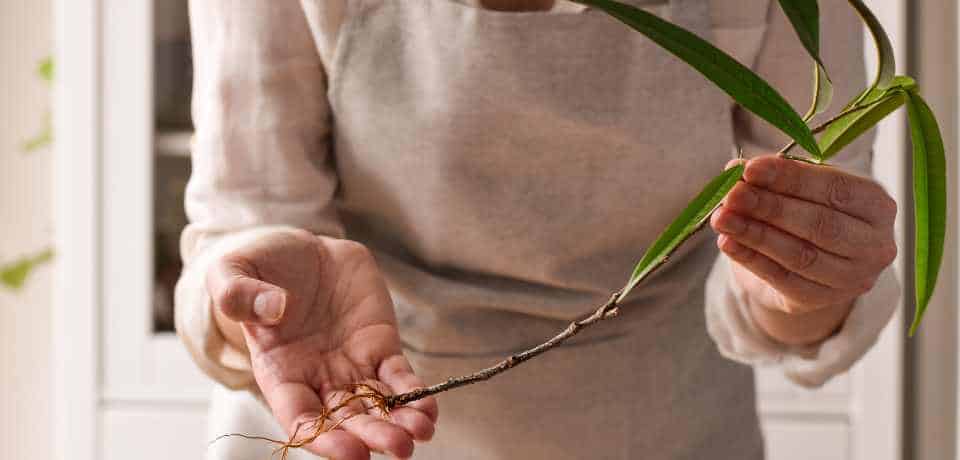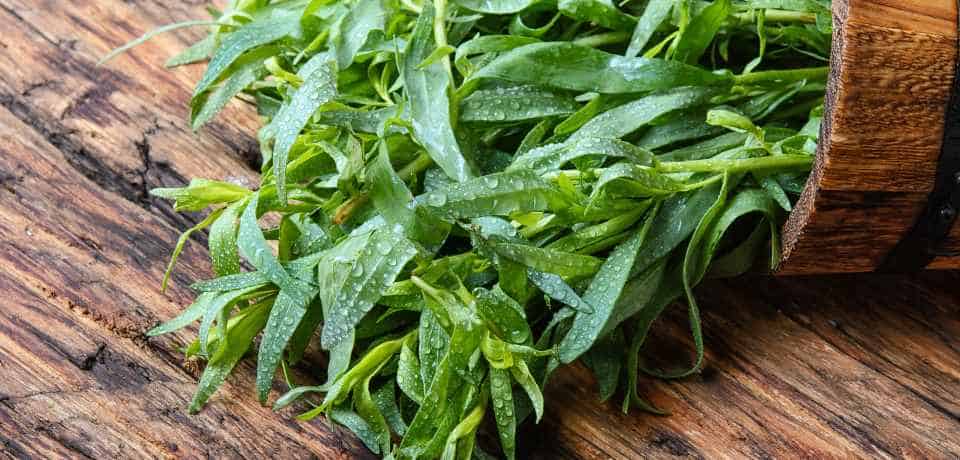Plants that grow from stems are an exciting and fulfilling method to increase the size of your collection and spread the pleasure of greens to others. Stem propagation is one of the most popular techniques since it is easy to use and works well with various plants.
This article explores 15 unique plants quickly propagated from stem cuttings and will enable you to start your plant propagation adventure. You will also learn about other pertinent elements, resources, and advice for improved cutting health from this post.
Stem Propagation

Understand the principles of stem propagation before delving into particular species. This method takes a portion of a plant’s stem, allows it to grow roots, and finally develops into a new, independent plant. The appropriateness of the selected plant, the kind of stem cutting, and good handling during the roots process are some of the variables that affect the success rate.
Also Read: How To Store Potatoes For Long-Term Use
Essential Tips for Success:
Here are some crucial recommendations for effective stem propagation.
• Choose healthy stems: Choose fresh, lively, pest- and disease-free stems.
• Make clean cuts: To make clean cuts, use sharp, sterilized instruments at a 45-degree angle directly below a node (where leaves and buds originate).
• Remove lower leaves: Remove lower leaves from the cutting, leaving just a couple on top. This lowers water loss and directs the plant’s energy into root growth.
• Choose the appropriate medium: Choose a well-draining potting mix or a sterile medium such as perlite or vermiculite.
• Maintain proper moisture: Keep the cutting area wet but not saturated. Regular misting or the use of a humidity tray might be beneficial.
• Provide the right light: Steer clear of direct sunshine, but ensure the cutting gets enough indirect light.
Also Read: Best Tips To Grow Sweet Potatoes In Containers
How To Choose Plants Suitable for Stem Propagation

A fun approach to increasing the size of your plant collection and spreading your enthusiasm for greens is via stem propagation. However, only some plants respond well to this approach.
The following ten essential elements and suggestions will help you choose plants that will flourish when cultivated from stem cuttings:
1. Consider the Plant’s Growth Habits:
• Herbaceous plants: Herbaceous plants, including herbs and houseplants, may root from cuttings of stems. They often grow delicate, green stems that snap readily when twisted.
• Woody plants: Certain woody plants, such as roses, may be grown from stems, although this may need particular processes. Look for plants that have softer, fresher growth inside their woody structure.
2. Assess the Stem’s Maturity:
Softwood cuttings: Typically soft, green, and pliable, they are taken from the growth of the current season. They are perfect for novices, and the simple st to roMintColeus, mint, and basil are a few examples.
• Cuttings made from semi-hardwood: These stems are solid yet flexible and originate from somewhat older growth. Azaleas and hydrangeas are two examples.
• Hardwood cuttings: These are the hardest to root, calling for particular methods and circumstances. They are taken from mature, woody stems. Apple trees and dogwood are two examples.
3. Observe the Presence of Nodes:
Nodes: The stem’s nodes are where buds and leaves arise. Since roots will grow in these regions, choose cuttings with at least one or two nodes.
4. Prioritize Healthy Plant Material:
Choose lively, robust stems without bugs, illnesses, or other symptoms. By doing this, you may be confident that your cuttings will have the highest chance of rooting.
5. Consider the Season:
• Spring and early summer: Plants thrive throughout spring and early summer, making them ideal for propagation.
• Avoid propagating during dormancy: Propagation should be avoided since success rates are reduced.
6. Research the Specific Plant’s Needs:
Specific conditions may apply to certain plant species to ensure sound site propagation. Find the right cutting size, rooting media, and maintenance requirements for your ch sen plant.
7. Choose Plants with High Rooting Success Rates:
Plants that are easy to propagate, such as succulents, pothos, and spider plants, may be successful or beginners. These provide a boost of self-assurance throughout the learning process.
8. Factor in Personal Preference and Space Availability:
Select plants that suit your hobbies and style of maintenance. Please consider the plant’s mature size and ensure you have enough room for it to develop.
9. Experiment with Different Techniques:
As you acquire expertise, experiment with different stem kinds (softwood, semi-hardwood, etc.) and rooting techniques (water, soil, etc.) to see what works best for other plant species.
10. Embrace the Learning Process:
Even with careful selection, propagation efforts may fail. View each effort as a learning opportunity, and adapt your strategy depending on the outcomes.
Note: Following these characteristics and advice can significantly boost your chances of picking plants that thrive when grown from stem cuttings. Remember that patience, observation, and a passion for plants are essential for a successful and pleasant propagation journey.
Also Read: The Integration of Technology in Kitchen Gardening
15 Plant Champions of Stem Propagation:
Here, you will find the best champion plants that grow very well from the stem and give you profit. These plants have various features and other relevant qualities.
1. African Violets:
These lovely floral houseplants may be grown using leaf cuttings with a tiny stem attached. Cut a healthy leaf with 1-2 inches of stem, place it in damp soil, and cover it with a plastic bag to preserve humidity.
2. Begonias:
With their colorful leaves and various types, begonias are ideal for stem propagation. Take stem cuttings approximately 1-2 inches tall, trim the lowest leaves, and put them in wet potting soil. Maintain stable moisture levels and give bright, indirect lighting.
3. Coleus:
Coleus is easily propagated from stem cuttings and is well-known for its vibrant, patterned leaves. Trim healthy stems to 3–4 inch portions, remove bottom leaves, and plant in the soil. Keep the soil moist for practical roots and give bright, indirect light.
4. Geraniums:
These vibrant blooming plants are well-liked for pots and gardens. It is possible to multiply geraniums using stem cuttings that are 4–6 inches long. Take off the lower leaves, put the cut end in optional rooting hormone, and moisten the soil.
Please ensure they get plenty of sunshine and stay wet all the time.
5. Lavender:
Not only is lavender aromatic, but it is also simple to grow from stem things. After removing any blossoms or flower buds, plant 3–4 inch stem cuttings just below a node in well-draining soil. Keep the soil dry and give it complete sun exposure for best results.
6. Mint:
Known for spreading quickly, this plant proliferates. Thankfully, you can use this energy to apply. Just clip off the lowest leaves from stem cuttings 3 to 4 inches tall and put them in a container filled with wet Mint.
Mint grows well in damp settings with indirect sunshine.
7. Pothos:
A popular and hardy houseplant, pothos propagate readily from stem cuttings. Take cuttings with several nodes, remove the lowest leaves, and either plant them immediately in damp soil or soak them in water to promote root formation.
Pothos thrives in bright, indirect light and needs moderate watering
8. Rosemary:
This fragrant plant may be reproduced from softwood and semi-hardwood stem cuttings. Select 4-6 inch cuttings, remove the lowest leaves, and dip the cut end in rooting hormone (optional) before planting in well-drained so l.
Rosemary loves full sunlight and is well-drained.
Also Read: Unearthing Expert Tips to Start a Garden From Scratch
9. Snake Plant (Sansevieria):
Cuttings of the leaves and stems may be used to cultivate this low-maintenance succulent. Use a healthy leaf with a tiny part of the stem attached for stem propagation. Before planting, let the cut end of the stem dry for one or two days in well-draining soil. Snake plants like bright, indirect light and don’t need much irrigation.
10. Spider Plant (Chlorophytum comosum):
This well-liked houseplant is a champion of stem growth, with its cascading leaves and production of siderites. After removing the bottom leaves from stem cuttings with two to three nodes, put the cuttings in water or wet soil. Spider plants demand steady hydration and bright, indirect light
11. String of Pearls (Senecio rowleyanus):
String of Pearls (Senecio rowleyanus): Stem cuttings are an easy way to cultivate this unusual succulent, distinguished by its cascading, pea-like leaves. Cut off any lower leaves, then take 4–6 inches long cuttings.
Let the cut end heal for a day or two. Next, please place them in a succulent mix that drains well and give them water—a string of Pearls like well-drained soil and bright, indirect light.
12. Succulents (Echeveria, Crassula, etc.):
Stem cuttings or offsets—small plantlets growing at the mother plant’s base—including Echeveria and Crassula.
Select a healthy stem for your stem cuttings, trim off the lower leaves, and let the cut end dry for a few days. Then, put them in a well-drained succulent mix and lightly water them.
13. Tradescantia (Wandering ew):
This colorful houseplant spreads well from stem cuttings and is renowned for its trailing stems and colorful leaves. After removing the bottom leaves from cu tings with two to three nodes, put the cuttings in water or wet soil.
Tradescantia needs steady hydration, light, and indirect light to grow well.
14. Philodendron:
Stem cuttings help propagate these graceful houseplants with luxuriant foliage. Select a healthy stem with at least one no e, cut off the bottom leaves, and place it in a container filled with an aroid mix that drains well.
Alternatively, soak the cutting in water before putting it in the soil to promote root growth—philodendrons like steady moisture and bright, indirect light.
15. ZZ Plant (Zamioculcas zamiifolia)
This is a low-maintenance houseplant with glossy, dark green leaves. Stem cuttings or leaf pieces may reproduce it with a tiny bit of the stem still attached.
For stem propagation, choose a healthy stem with at least one node, remove the bottom leaves, and plant in well-drained soil. ZZ plants can endure low light levels and need little water.
Also Read: What New Methods And Technologies Revolutionized Agriculture
5 Key Conditions for Successful Stem Propagation:
It would be best to focus on the factors involved in adequately growing plants from the stem. Here are those factors for your ease.
1. Suitable Temperature:
Ma nt in a warm and consistent temperature of 65 5°F (18-24°C). This encourages root growth while reducing stress on the cutting.
2. Adequate Moisture:
Keep the rooting media (soil, water, etc.) wet but not overwatered. Regular misting or using a humidity tray might be advantageous, particularly in arid conditions.
. Indirect Sunlight:
Most plants need intense, indirect light for stem growth. Avoid direct sunshine, which may burn the fragile stems and stunt root development.
4. Well-Draining Medium:
Use a well-drained potting mix or medium, such as perlite or vermiculite. This promotes appropriate aeration and avoids root rot, which may harm the cutting.
5. Pr per Hygiene:
Maintain proper hygiene using sterilized stem-cut instruments. This helps to avoid spreading germs and illnesses that may destroy the delicate cuts.
Also Read: Pros & Cons of Container Gardening: A Comprehensive Guide
5 Tips For Caring for Plants Propagated by Stem Cuttings:
Dear readers, just planted stems are insufficient to care for those cuttings adequately. Here are those tips that are essential for proper growth of your stems.
1. Consistent Moisture:
Regularly check the rooting medium’s moisture content. Because their root system still needs to be improved, newly propagated plants need regular hydration; moreover, they should be well-watered as this might cause rot.
Adapt the watering frequency to the plant’s demands and the pace at which the medium dries.
2. Humidity Boost:
Supply greater humidity to encourage root growth and keep the delicate foliage from drying out, especially in arid conditions. It may be beneficial to moist the plant often, such as by using a pebble tray filled with water or a humidifier.
3. Gradual Acclimatisation:
Gradually introduce a plant to its target habitat once its roots have taken hold and show fresh growth. To help the plant adjust to its permanent surroundings, gradually increase its exposure to light and decrease the frequency of its misting.
4. Fertilisation:
Refraining from fertilizing recently propagated plants as they concentrate on root growth is advisable. After the plant is well-established and developing (usually a few weeks), you may start applying a diluted fertilizer solution based on the demands of the particular plant.
5. Monitoring and Adjustments:
Keep an eye out for any indications of stress, such as wilting, yellowing leaves, or stunted development, on your propagated plant. To guarantee the plant’s healthy growth, modify your care procedures (watering, light, humidity) appropriately and take quick action to resolve any possible problems.
Note: By adhering to these five crucial guidelines, you may properly care for your freshly propagated plants, enhancing their chances of prospering and blossoming into healthy, established people.
Also Read: 15 Different Styles of Vegetable Gardens
Essential Tools For Thriving Plants From Stem
Here are a few essential tools to help you work in your garden.
1. Pruning Shears: Use these to make clean cuts on stems for propagation. Choose sharp bypass pruners that will cut cleanly without breaking the stems.
2. Sharp Knife: A sharp knife helps make accurate cuts on stems, particularly for tiny plants or fragile stems.
3. Rooting hormone (optional): Apply rooting hormone (powder or gel) to the cut end of the stem to promote root formation. While not always essential, it might benefit plants that are difficult to reproduce.
4. Planting pots: When choosing planters, ensure they have drainage holes to avoid waterlogging, which may harm the roots. The pot’s size should correspond with the cutting’s dimensions.
5. Well-draining potting mix: Choose a mix for growing plants or beginning seeds. By doing this, enough drainage and aeration for the roots will be guaranteed.
6. Watering can: To assist you in watering your freshly propagated plants evenly and tenderly, choose a watering can with a delicate rose attachment. Steer clear of utilizing a solid stream of water, as this might harm the fragile roots.
7. Humidity tray (optional): Some plants do better in dry conditions, so adding more humidity to the area surrounding our just propagated plants may be helpful.
8. Plant labels: Plant labels come in handy for recording the kind of plant you had propagated when you first began and any other pertinent details.
You may effectively reproduce a wide range of plants from stem cuttings if you have these necessary instruments and provide them with the proper care.
Also Read: Ultimate Vegetable Gardening Styles For Home
Conclusion
You may start a fruitful path of growing your plants using these plants and the advice given. Recall that selecting the proper plant, creating the ideal environment, and providing constant care throughout the roots process are all necessary for success.
So gather your supplies, choose your best plant, and see the miracle of new life emerging from a mere stem cutting!
Keep Reading
- Best 25 Essential Tools To Start A Kitchen Garden
- How to Start a Kitchen Garden: A Comprehensive Guide
- Fast Growing Vegetables in Pots
- Revolutionize Your Garden with Solar-Powered Tools
- Fastest Growing Vegetables: From Seed to Table in No Time
Recent Posts
Here is reply of high-demand removable wallpapers. The wallpaper industry has changed a lot in recent times, with the launch of removable wallpaper being seen as a blessing for homeowners, renters,...
Brown is an often neglected color when considering interior design but brown decor living room ideas could make your house feel warm, sophisticated, and timeless. More adaptable than any other...
























